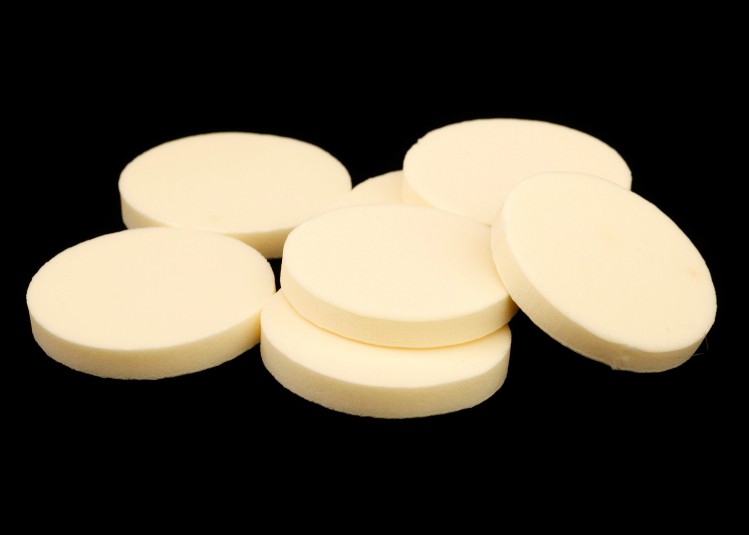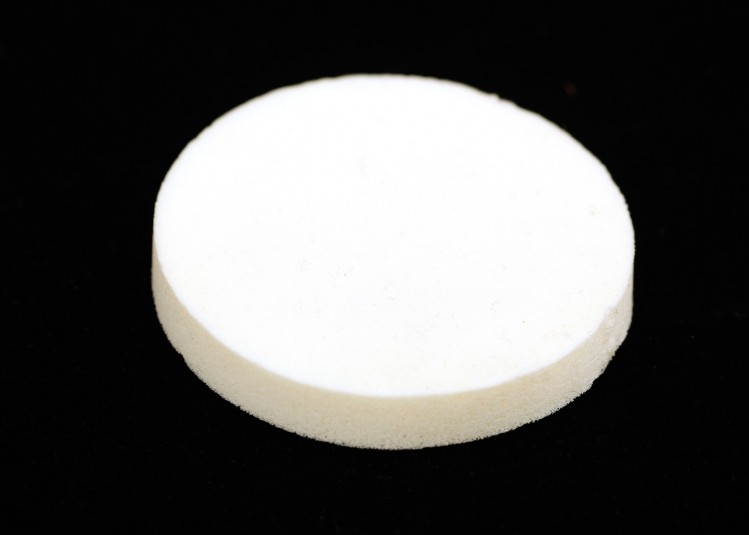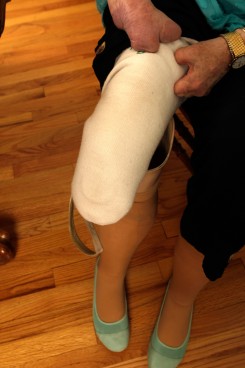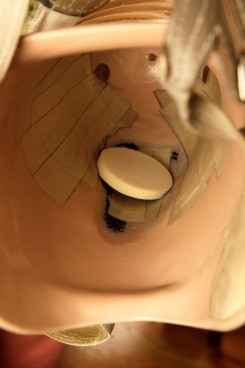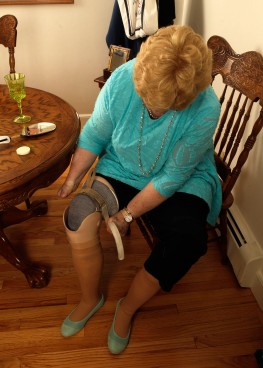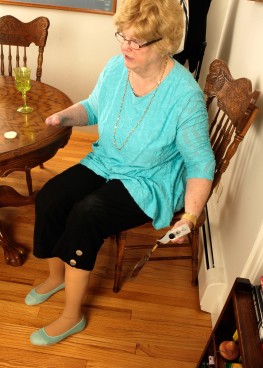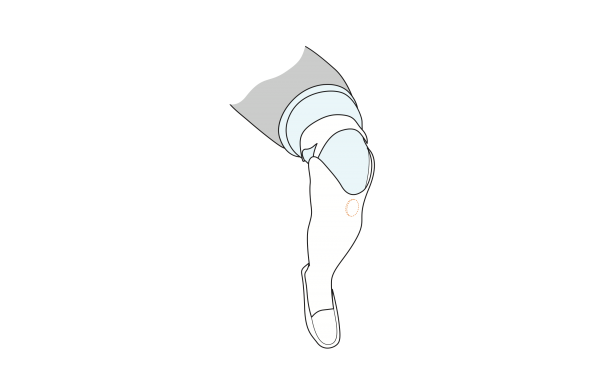Cosmetic Sponges
Inspired by the lambswool in ballerina toe shoes, Cindy uses a cosmetic sponge to alleviate discomfort where her residual leg sits against the prosthetic.
Description
Cindy refers to Greig Martino, her prosthetist from United Prosthetics, as a miracle worker, but even he admits that the solution to one problem eluded him. Greig and his team created for her two below-knee prosthetics, and they are perhaps the most crucial part of her recovery. One of her legs, the right and longer one, was painful to walk on at the point where the shin bone touches the prosthetic. Cindy knows she needs to be attentive to even slight pain in her legs, because they may signal an irritation that could lead to skin breakdown. She worries constantly that if her skin breaks down she won’t be able to use the legs, and she’ll have to use a wheelchair, for which her home is inaccessible. Greig tried various solutions and the next option was to put a hole in the prosthetic itself.
The pain was intense with every step she took, so the problem was foremost in Cindy’s mind. As she told us, “I just kept picturing ballerinas. I know they have a lambswool pad that they put over their toes to protect them against the wood of their toe shoes. I kept picturing that. That I just want to put something over that bone to protect it.” From this toe shoes inspiration, Cindy thought of disposable sponges for removing makeup, the kind many people might have around their homes already. She slipped a sponge in over the bone, and then pulled the “stump sock” over it. As she says: “problem solved.”
As Greig, her expert prosthetist, told us, “Sometimes household objects lead to better solutions than anything I can do, with my 42 years of experience, and thinking I’m a genius at everything.” Greig joked here and added, “I know I don’t have all the answers. I need my patients to jump in and help me. This is when we’re most successful.” Greig admits that he never would have thought of this, and that normally the cardinal rule is to not insert anything between the residual limb and the stump sock (don’t try this at home!). But for Cindy, it does the trick. As Greig notes, the pressure of the sponge seems to interrupt the pain signal to the brain. It’s the perfect thickness and she can place it in the specific spot to alleviate the discomfort.
(Regarding the image that shows the sponge sitting directly inside the prosthetic: note that in Cindy’s solution, the sponge doesn’t get placed directly against the prosthetic—instead it sits against her residual leg, which is then covered by a “stump sock.” This image is intended to illustrate where on the prosthetic the sponge serves as the buffer.)
